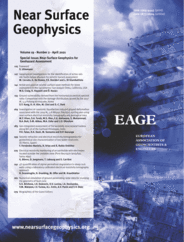
Full text loading...
 , Denis Jongmans1, Thomas Lebourg2, Simon Carrière1
, Denis Jongmans1, Thomas Lebourg2, Simon Carrière1
In the past decade, passive seismic methods have shown the possibility to detect significant changes in surface wave velocity up to several days prior to landslide failure, even with sensors located outside the unstable zone. Electrical resistivity tomography has also long been used to monitor hydrological changes in landslides. However, the displacement of electrodes relative to each other during landslide movement induces a modification of the geometric factors and, hence, of the apparent resistivity. The first objective of this work is to evaluate the possibility of monitoring the Pont‐Bourquin landslide (Swiss Alps) with electrodes located outside the unstable zone. The second objective is to monitor both seismic velocity and electrical resistivity to get insights into the evolution with time of mechanical and hydrological parameters, respectively. The sliding mass was first imaged in three dimensions to produce a resistivity starting model for the further inversion of time‐lapse data. Daily time series (235 days from February to November 2015) showed that changes are detected but cannot be spatially localized, in agreement with numerical simulation results. At the seasonal scale, resistivity and seismic time series are positively correlated with temperature and suggest a control by superficial water content. On the scale of a few days, geophysical parameters are negatively correlated with precipitation and suggest rapid infiltration of water into the ground. Although laboratory experiments show that no change in resistivity occurs during fluidization, and since no flow occurred during the monitoring period the evolution of resistivity during a flow event remains an open question.

Article metrics loading...

Full text loading...
References


Data & Media loading...

